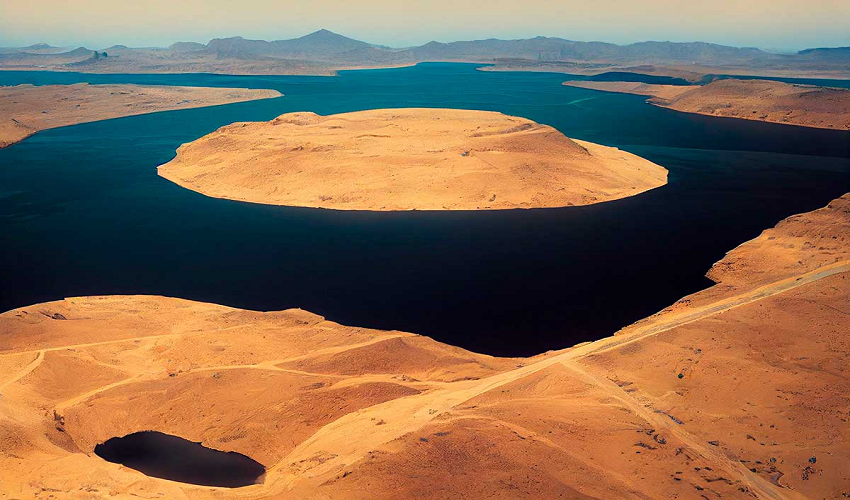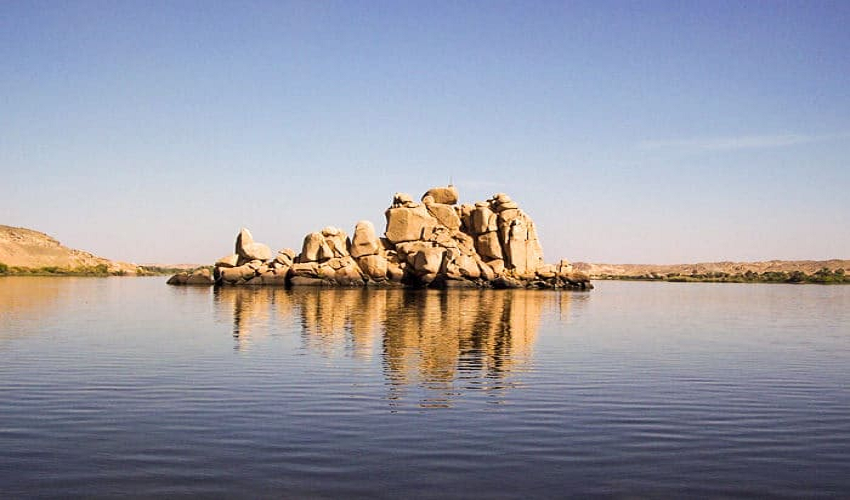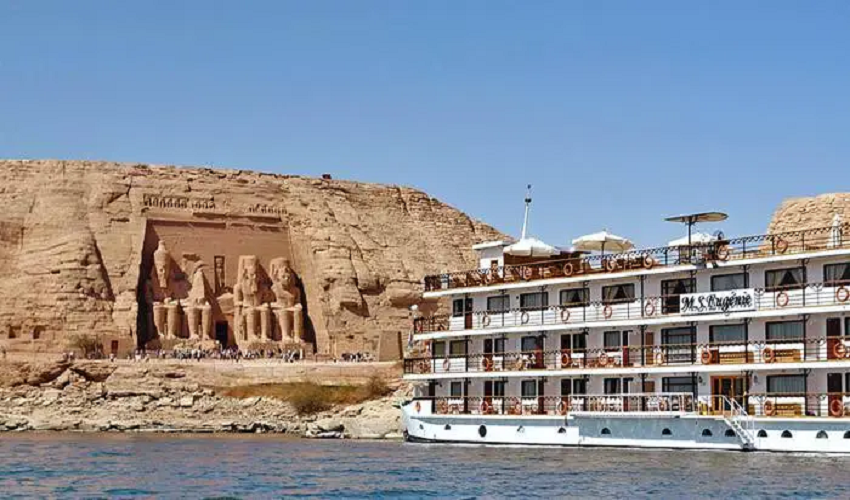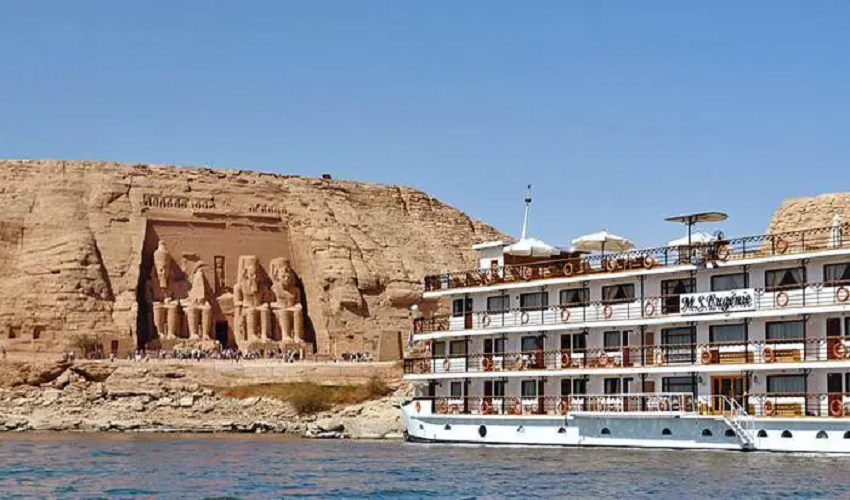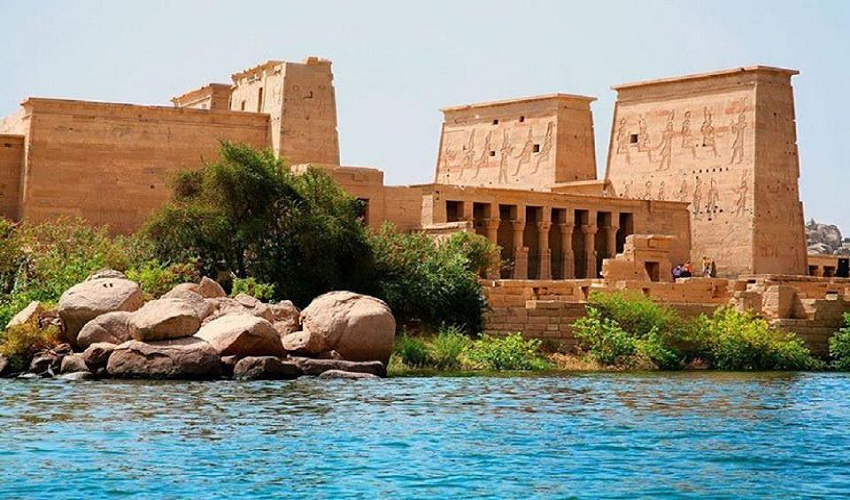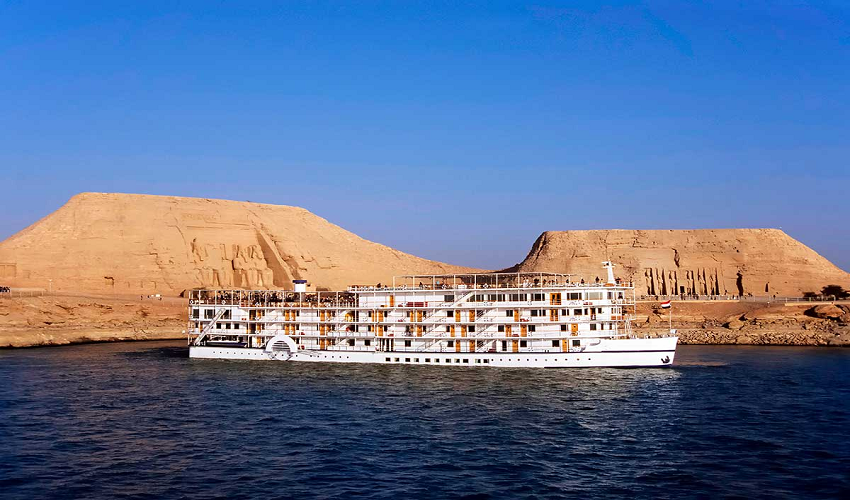Nasser lake, in Arabic: بحيرة ناصر Bohairet Nasṣer, is an enormous water reservoir in south Aswan in Egypt.It is located in both Egypt and Sudan, Nasser Lake was created when the Egyptian constructed the Aswan High Dam which is one of the largest man-made lakes in all world. The lake has became an essential economic resource to Egypt,ameliorating agriculture and increasing robust fishing and tourism activites such as lake Nasser cruises.
Bohaeret Nasser (Lake Nasser) is named after Gamal Abdel Nasser, the president of Egypt from 1956 to 1970, this huge reservoir was formed by the construction of the High Dam at Aswan during the 1960s.Aswan dam or Saad Ali dam was erected to expand agricultural production andgiving protection to Egypt from flood either high flood or low flood, as well as producing access to electricity for many of Egypt’s sites..River Mega dams are not always having positive advantage, but also have several negative impacts, There were positive sides but also negative sides of building the high dam in south Egypt, it also had harmfull downstream results. In this case, a rising water table damaged ancient monuments, and agricultural fields. A lack of rich sediment in the water drove high artificial fertilizer use.
The construction of Aswan high dam would bring into being a huge artificial lake behind the dam wall, requiring the resettlement of tens of thousands of indigenous Nubians from villages in the area and also threatening monuments.
Pharaonic and Greco-Roman temples including those of Abu Simbel risked being submerged.
The most well known of Egyptian temples affected by Aswan High Dam Project were Philae temple, Sacred to the goddess Isis, and Abu Simbel temples
Many othere temples were also menaced by the construction of Aswan dam such as
the large temple of Kalabsha,the temple of Beit el Wali the small Dendur temple further South,
the rock temple of Ramses at Gerf Husein,
the Dakka temple
a temple of Ramses II at Wadi es Sebua, the rock temple of Derr and others.
In 1960, UNESCO, the U.N. organization dedicated to preservation of culture, launched an appeal to rescue the threatened temples in south Egypt. Abu Simbel temple was the most important one to save, it is consisting of 2 temples, the big one was dedicated to Ramsses II, The small temple was dedicated to his wife Nefertari, Some projects were offered but, very high cost, they were quickly refused.
In due course a Swedish-Egyptian progect was chosen.
Work was launched on first April , 1964 with the building of a short-term dam to defend the place and the digging up of the cliff around the two temples.
The Abu Simbel temples were cut into 1,035 blocks each weighing between twenty and thirty tonnes. The 4 seated statues of Ramses II and six others of the king standing up were sawed into pieces.
Jacks, cranes and powerful winches hoisted the enormous stone weights to the top of the cliff, 64 meters (210 feet) from their original location.
There the blocks were reassembled to reconstitute the two temples exactly as they.
The same appeal of Unesco helped to save other temples such as Philae temple and Kalabsha temple
In addition, Egypt donated four temples as tokens of its gratitude to countries which especially contributed to the success of the campaign: Debod to Spain, Taffa to the Netherlands, Dendur to the United States and Ellesyia to Italy.

